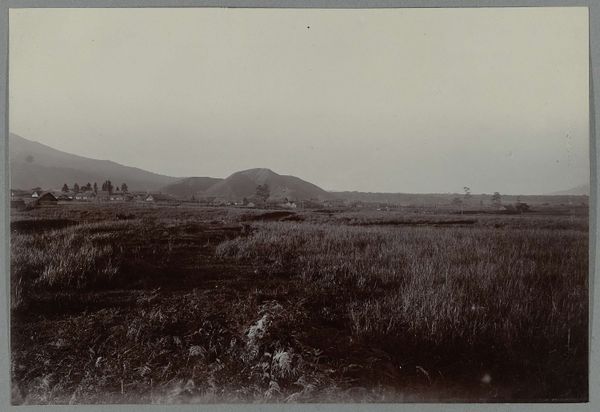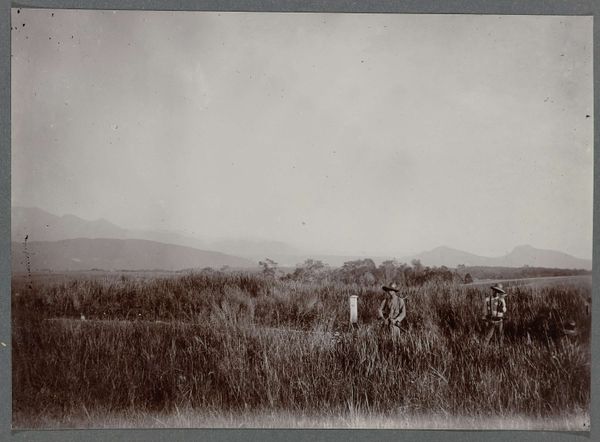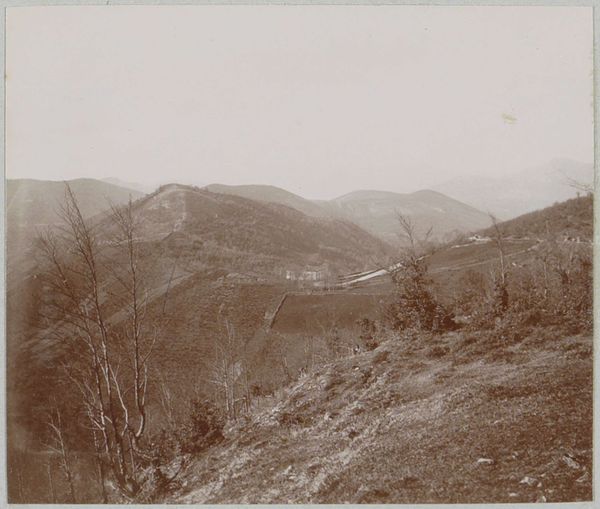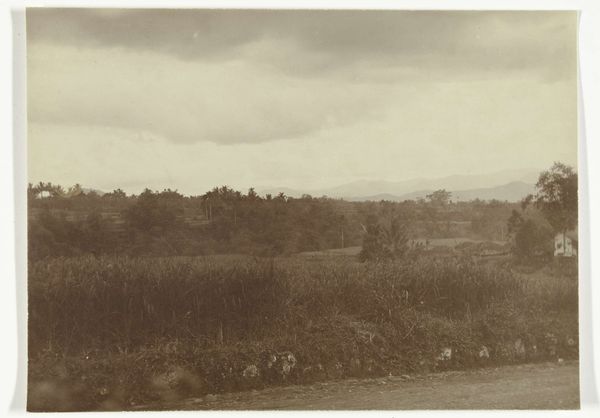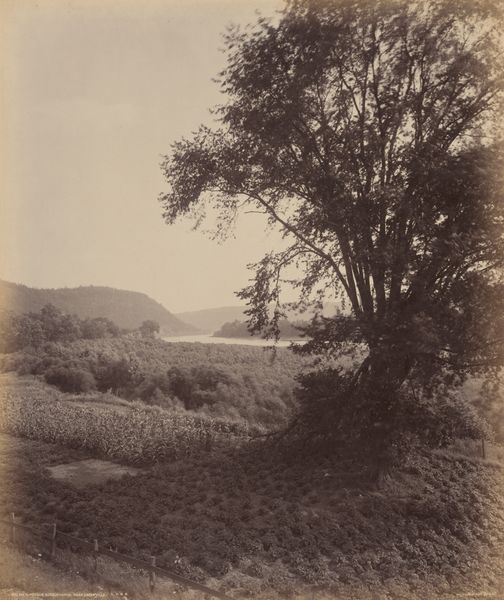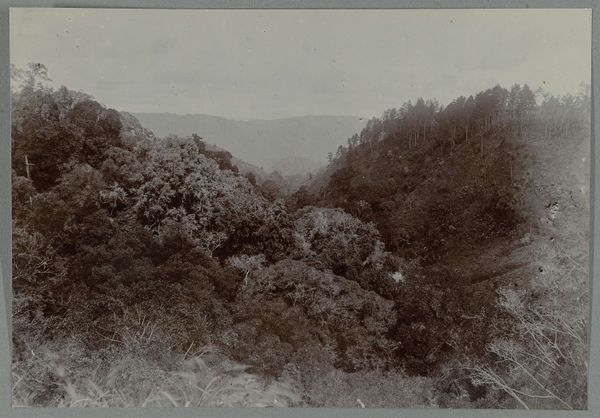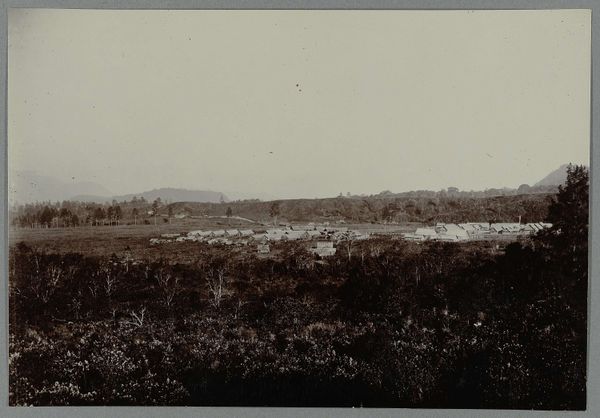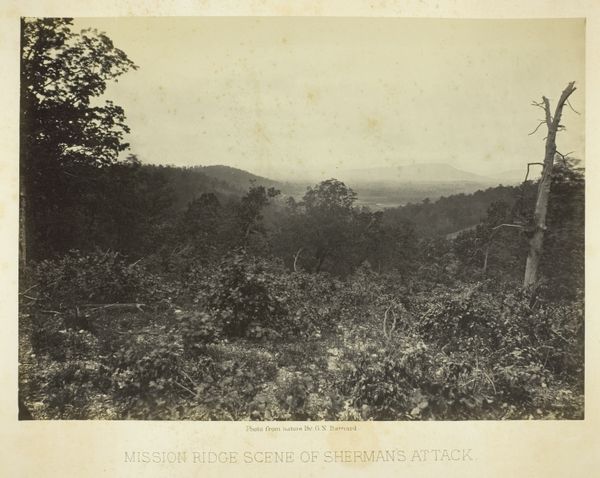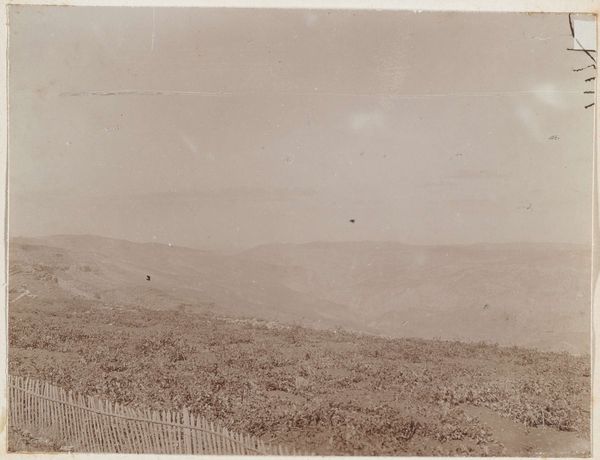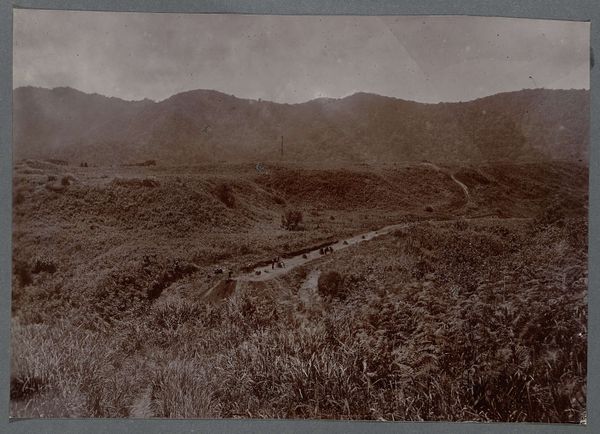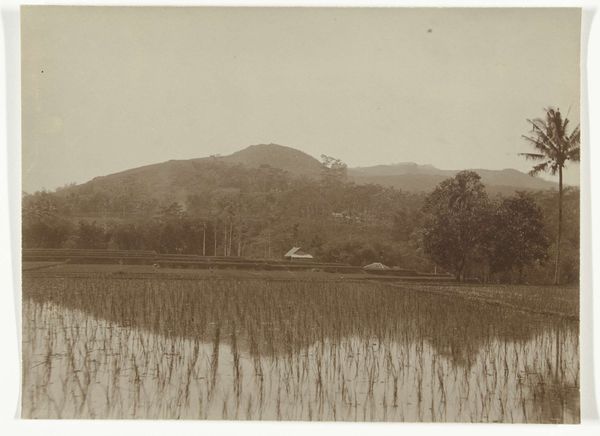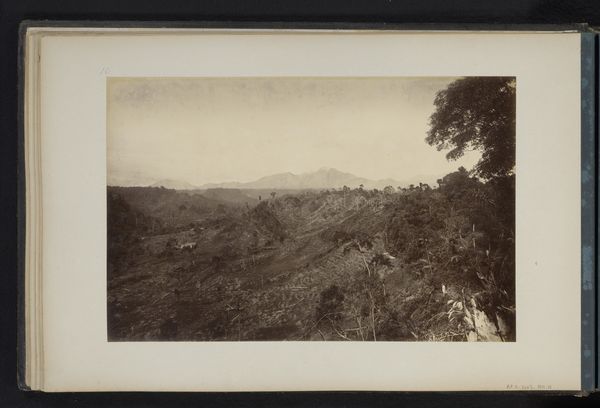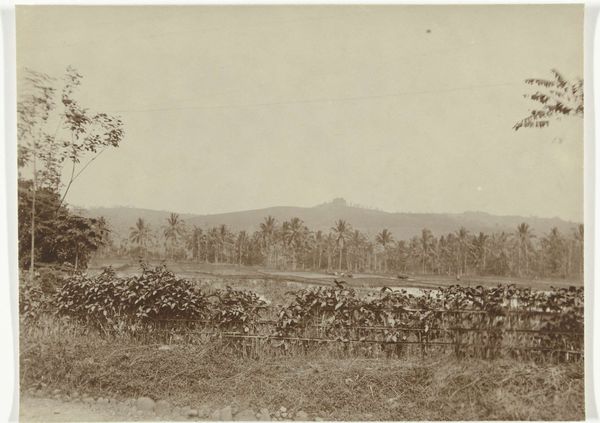
photography
#
still-life-photography
#
countryside
#
landscape
#
nature
#
photography
#
realism
Dimensions: height 138 mm, width 200 mm
Copyright: Rijks Museum: Open Domain
Curator: Immediately, I feel a sense of stillness. The scene evokes a quiet immensity; the eye seems to recede into the hazy background. Editor: That’s interesting, I mostly see dense vegetation, overwhelming almost, swallowing the light and leaving the scene…almost tactile. Curator: Well, this photograph, titled “Landvlakte” or “Plain Landscape”, made between 1903 and 1913, offers a complex symbolism through its depiction of the landscape. What meanings do you glean from this particular selection and framing of nature? Editor: Right, complex symbolism. I'm more struck by the probable effort and resources required to take this photograph in that time. What kind of equipment was used, who processed it? This wasn’t as simple as pointing and shooting. How long was this exposure time? Curator: That’s fascinating. Considering the era, the equipment and labour certainly add another layer to the visual weightiness of the scene, it speaks to colonialism, or possibly environmental impact, as symbols for more abstract feelings. Editor: Precisely! The image's perceived beauty can mask exploitation of land and labor. What does a pristine landscape really signify when framed by that context? Was the development even local? The chemicals? Curator: Absolutely. In visual language, landscapes often act as projections of the mental and spiritual state. But, as you pointed out, who is being projected? What actions led to its need of remembrance, or to the idea of even making this picture. Editor: These landscapes also served as documentation, though, providing early colonial views or proof of 'cultivated' land. Looking closely, I start to consider the labor required to transform even the scene before us, even to walk over there and choose the framing! Curator: So the photo then captures the instant when observation transforms into dominion, which becomes yet another symbol imbued in the land! Editor: Exactly. So while you see that stillness, the sublime almost, I’m seeing how something is becoming industrialized by an act of memorialisation or record keeping. Curator: Thanks to your observations I now perceive the historical act embedded within the still image. Editor: And thanks to your prompt I can better appreciate that perhaps nothing, not even a plain landscape, is actually neutral.
Comments
No comments
Be the first to comment and join the conversation on the ultimate creative platform.
